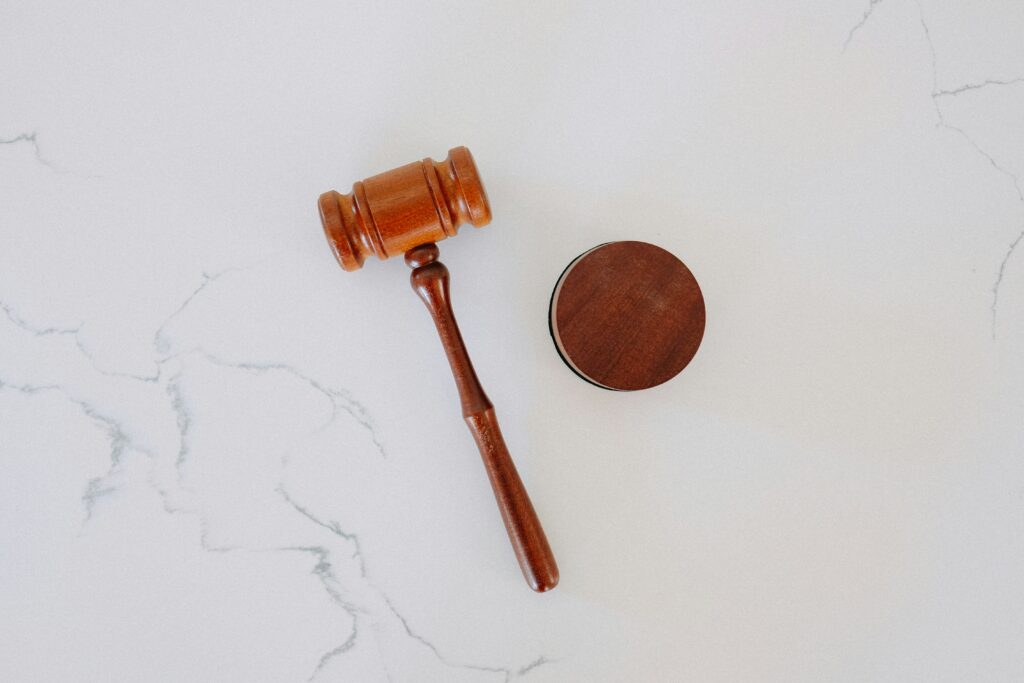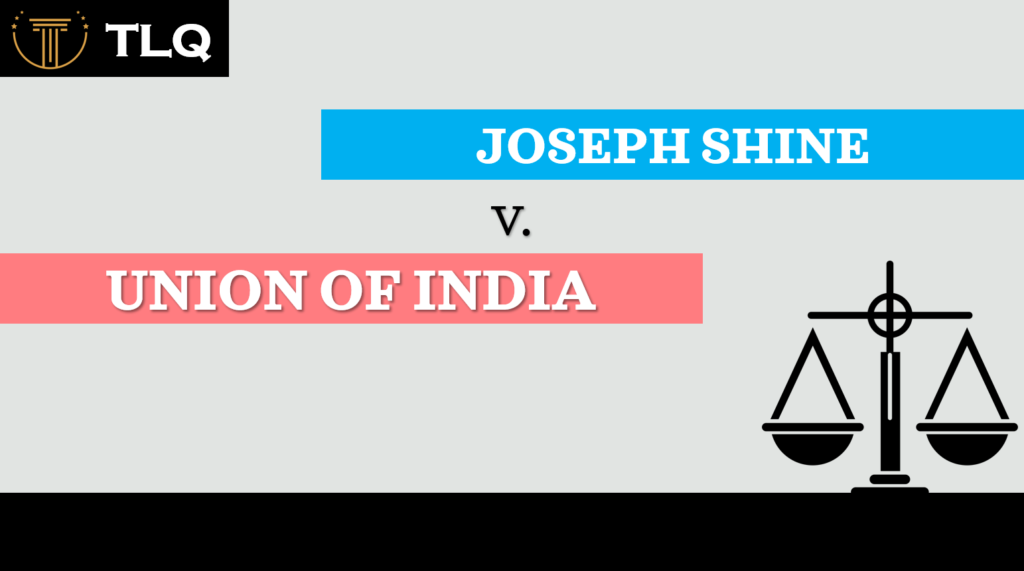Published On: 30th October 2025
Authored By: Sooraj KR
Government Law College Thrissur
ABSTRACT
The increasing dependence on digital technology in both personal and professional spheres has inevitably led to a rise in cybercrimes and disputes involving electronic records. The admissibility of digital evidence poses unique challenges, primarily relating to authenticity, reliability, and compliance with procedural safeguards. This article critically examines the evolution of digital evidence law in India, from the Indian Evidence Act, 1872, to the Bharatiya Sakshya Adhiniyam, 2023. Through an analysis of key judicial pronouncements such as Anvar P.V. v. P.K. Basheer and Arjun Panditrao Khotkar v. Kailash Kushanrao Gorantyal, this article highlights the tension between strict statutory requirements and the practical realities of proving electronic evidence. It further explores contemporary challenges such as deepfakes, metadata, chain of custody, and cross-border data issues. By comparing Indian jurisprudence with the U.S. Federal Rules of Evidence, the U.K. approach, and the EU’s GDPR, the article proposes reforms aimed at strengthening evidentiary standards, enhancing forensic infrastructure, and ensuring a balance between technological realities and constitutional safeguards under Articles 20 and 21. The discussion aims to contribute to ongoing debates on cyberlaw, evidence, and the digital justice framework in India.
INTRODUCTION
The digital transformation of society has fundamentally altered commerce, communication, and governance, while simultaneously reshaping the nature of crime and its investigation. India, with over 900 million internet users, has become both a hub for digital innovation and a vulnerable target for cybercriminal activity.[1] Offences such as hacking, identity theft, phishing, cyberstalking, and the growing menace of deepfake exploitation have become common, making electronic evidence indispensable to modern prosecutions.[2]
The law of evidence, historically rooted in the colonial-era Indian Evidence Act, 1872, was ill-equipped to address the complexities of the digital era.[3] The enactment of the Information Technology Act, 2000, introduced statutory recognition of electronic records and laid the foundation for their admissibility in courts.[4] Yet, the rigid framework of Section 65B created significant procedural hurdles. Judicial decisions, beginning with Anvar P.V. v. P.K. Basheer,[5] through Shafhi Mohammad v. State of Himachal Pradesh,[6]and culminating in the larger bench ruling in Arjun Panditrao Khotkar v. Kailash Kushanrao Gorantyal,[7] have attempted to clarify the law, but conflicting interpretations have revealed enduring ambiguities.
The Bharatiya Sakshya Adhiniyam, 2023, which replaced the Evidence Act, represents a legislative attempt to modernize evidentiary rules and align them with technological realities.[8] However, critical questions remain: How can courts ensure authenticity and reliability in an age where digital records can be easily manipulated? Does the insistence on strict certification under Section 65B strike the right balance between due process and evidentiary integrity? And to what extent should Indian jurisprudence draw from comparative frameworks, such as the U.S. Federal Rules of Evidence[9] or the U.K.’s flexible reliability-based approach?[10]
This article explores these questions by critically examining the statutory framework and judicial pronouncements on digital evidence in India. It highlights contemporary challenges—including metadata, chain of custody, deepfakes, and cross-border data issues—before drawing comparative lessons from international practices. In doing so, it argues for a reform-oriented approach that balances technological adaptability with constitutional safeguards under Articles 20 and 21 of the Constitution of India.[11]
LEGAL FRAMEWORK IN INDIA
The statutory recognition of digital records in India can be traced to the amendments brought by the Information Technology Act, 2000, which inserted provisions into the Indian Evidence Act, 1872, to deal with electronic evidence.[12] Most significantly, Section 65B was introduced to govern the admissibility of electronic records, making certification a mandatory precondition for their use as secondary evidence.[13]
The Supreme Court, in Anvar P.V. v. P.K. Basheer, held that compliance with Section 65B was a mandatory requirement and that oral evidence could not substitute for the certificate.[14] Subsequently, in Shafhi Mohammad v. State of Himachal Pradesh, the Court appeared to dilute this position, holding that the certificate requirement could be relaxed when a party did not possess the device from which the record was produced.[15] This created confusion, leading to a reference to a larger bench. In Arjun Panditrao Khotkar v. Kailash Kushanrao Gorantyal, the Supreme Court reaffirmed the strict requirement of a Section 65B certificate, clarifying that it could only be dispensed with where the party had no control over the device.[16]
The Bharatiya Sakshya Adhiniyam, 2023, which replaced the Evidence Act, retains this framework and continues to emphasize procedural safeguards to prevent fabrication and ensure the reliability of digital evidence.[17] While the law is now settled on the necessity of certification, practical challenges in enforcement persist.
JUDICIAL INTERPRETATION
Judicial pronouncements have been central in defining the evidentiary value of electronic records in India. The transition from the Indian Evidence Act, 1872, to the Bharatiya Sakshya Adhiniyam, 2023, has been driven less by legislative foresight than by judicial necessity in grappling with the realities of cyber evidence.
The seminal case of Anvar P.V. v. P.K. Basheer marked a watershed moment.[18] The Supreme Court categorically held that electronic evidence is admissible only if accompanied by the mandatory certificate under Section 65B(4). Oral testimony or other secondary forms of proof could not substitute for compliance with the statutory mandate. This judgment departed from earlier precedents that had permitted more flexible approaches, thereby prioritizing procedural rigor over evidentiary convenience.
However, judicial uncertainty soon emerged. In Shafhi Mohammad v. State of Himachal Pradesh, a two-judge bench diluted the principle in Anvar, holding that the requirement of a Section 65B certificate was procedural and should not bar justice in cases where a party could not reasonably secure such certification.[19] This ruling was criticized for undermining the legislative intent behind Section 65B and creating interpretative confusion.
The conflict was settled in Arjun Panditrao Khotkar v. Kailash Kushanrao Gorantyal, where a three-judge bench restored doctrinal clarity.[20] The Court reaffirmed that the certificate is a condition precedent for admissibility, with a narrow exception carved out for instances where the evidence is produced by a device not under the party’s control. This judgment not only harmonized the jurisprudence but also emphasized the importance of authenticity in an age of digital manipulation.
Beyond Section 65B, courts have extended the discourse to novel evidentiary contexts. In State (NCT of Delhi) v. Navjot Sandhu, the Court initially admitted electronic records such as call data without certification, relying on oral evidence of investigating officers.[21]Though later overruled, this case illustrates the judiciary’s early struggle in reconciling technological realities with evidentiary law. Similarly, in Tomaso Bruno v. State of Uttar Pradesh, the Court stressed the importance of CCTV footage in criminal trials, noting that failure to produce such evidence could give rise to adverse inferences.[22]
The judiciary has also been compelled to balance evidentiary rules against constitutional guarantees. In Justice K.S. Puttaswamy (Retd.) v. Union of India, the Supreme Court recognized the right to privacy as a fundamental right under Article 21, thereby mandating higher scrutiny of surveillance-based evidence.[23] Later, in cases concerning interception of communications under the Telegraph Act, the courts insisted that investigative necessity must be weighed against privacy, ensuring that digital evidence gathering does not devolve into mass surveillance.
These rulings demonstrate the Court’s evolving approach: a cautious recognition of the indispensability of digital evidence, tempered by procedural safeguards and constitutional values. The tension between technological advancement, evidentiary certainty, and fundamental rights continues to define the judicial landscape of cyber evidence in India.
CONTEMPORARY CHALLENGES
Despite statutory developments and judicial clarification, significant challenges persist in the admissibility and reliability of digital evidence in India. The very nature of electronic data—intangible, easily replicable, and susceptible to alteration—creates persistent doubts about authenticity, integrity, and evidentiary weight.
- Authenticity and Integrity of Records
Electronic records are inherently vulnerable to manipulation. Even a minor alteration in metadata can compromise their evidentiary value. Indian courts have repeatedly emphasized the need for strict procedural safeguards. In Anvar P.V. v. P.K. Basheer, the Supreme Court underscored that the certificate under Section 65B was not a mere formality but a guarantee of authenticity.[24] However, practical challenges arise where investigating agencies lack technical expertise, resulting in incomplete or defective certification. - Chain of Custody
The evidentiary value of digital records is also dependent on an unbroken chain of custody. Any gap in handling or documentation raises the possibility of tampering. In Ram Singh v. Col. Ram Singh, though decided in the context of tape recordings, the Court stressed that without a proper chain of custody, electronic evidence becomes inadmissible. [25] Unfortunately, Indian investigative agencies often lack standardized protocols for seizure, preservation, and transfer of electronic devices. This deficiency undermines the evidentiary weight of even potentially decisive material such as CCTV footage and call data records. - Emerging Threats: Deepfakes and Synthetic Media
One of the most pressing challenges is the advent of deepfakes and AI-generated synthetic media. These hyper-realistic fabrications blur the line between reality and manipulation, making it increasingly difficult to establish authenticity. Courts have yet to develop a consistent framework for addressing such threats, though the issue has been recognized in academic commentaries and international legal discourse.[26] The Bharatiya Sakshya Adhiniyam, 2023, while technologically neutral, offers no explicit guidance on dealing with AI-based falsifications, leaving judicial discretion as the primary safeguard. - Metadata and Technical Exclusions
Metadata, often described as the “digital fingerprint” of an electronic record, is crucial in establishing originality, timestamps, and the chain of custody.[27] Yet, Indian courts have been inconsistent in their approach. Many trial courts overlook metadata as secondary, despite its evidentiary significance. Without mandating the production of metadata, the judicial process risks ignoring a crucial component of digital authenticity. - Cross-Border Data and Jurisdictional Hurdles
Another significant obstacle arises from the globalization of data storage. Cloud computing and foreign servers mean that crucial evidence is often located outside Indian jurisdiction. The Central Bureau of Investigation v. Abu Salem Abdul Qayoom Ansari case highlighted the complexities of cross-border evidence collection, even in extradition contexts.[28] Mutual Legal Assistance Treaties (MLATs) and requests under Section 166A of the Code of Criminal Procedure are slow and bureaucratic, often causing evidence to be lost in time-sensitive cases such as cyber fraud. - Investigative Capacity and Training
Finally, the reliability of digital evidence depends heavily on the competence of law enforcement. Studies by the National Crime Records Bureau (NCRB) and independent reports have noted significant training deficits in cyber forensics among police personnel. [29]. Without standardized forensic protocols and technical literacy, even statutorily admissible evidence is weakened in practice.
Taken together, these challenges demonstrate that the statutory framework, while robust on paper, struggles in practical enforcement. Unless India develops a strong ecosystem of digital forensics, international cooperation, and judicial awareness, the evidentiary reliability of electronic records will remain precarious.
THE WAY FORWARD
Reform must focus on balancing authenticity with accessibility. First, legislative clarification is required to simplify Section 65B certification, perhaps by allowing metadata or forensic reports as substitutes. Second, specialized judicial and investigative training is essential to maintain the chain of custody. Third, investment in forensic infrastructure and laboratories is necessary to tackle emerging threats like deepfakes. Finally, India must strengthen international cooperation for cross-border cybercrime investigations, possibly through bilateral treaties or adherence to the Budapest Convention on Cybercrime. Such reforms will ensure that digital evidence serves as a tool of justice rather than a hurdle.
CONCLUSION
The evolution of digital evidence law in India reflects the broader tension between tradition and modernity. While the Bharatiya Sakshya Adhiniyam, 2023, represents a step forward, it inherits unresolved dilemmas from Section 65B. Judicial pronouncements have clarified some ambiguities, but practical challenges, such as deepfakes, metadata, and cross-border data, remain. A comparative analysis shows that flexibility, not rigidity, is the hallmark of successful evidence regimes. India must thus embrace a reform-oriented approach, ensuring that evidentiary law keeps pace with technological advancements while safeguarding the rights of the accused and victims alike under Articles 20 and 21 of the Constitution of India.
REFERENCES
[1] Telecom Regulatory Authority of India, Indian Telecom Services Performance Indicators July–September 2023, at 15 (2023).
[2] Ministry of Home Affairs, National Cyber Crime Reporting Portal Statistics (2024).
[3] Indian Evidence Act, No. 1 of 1872 (India).
[4] Information Technology Act, No. 21 of 2000, § 65B (India).
[5] Anvar P.V. v. P.K. Basheer, (2014) 10 SCC 473 (India).
[6] Shafhi Mohammad v. State of Himachal Pradesh, (2018) 2 SCC 801 (India).
[7] Arjun Panditrao Khotkar v. Kailash Kushanrao Gorantyal, (2020) 7 SCC 1 (India).
[8] Bharatiya Sakshya Adhiniyam, No. 45 of 2023, § 65B (India).
[9] Fed. R. Evid. 901 (U.S.).
[10]Police and Criminal Evidence Act 1984, c. 60 (U.K.).
[11] INDIA CONSTI ART’s 20, 21
[12] Information Technology Act, No. 21 of 2000, § 92 (India).
[13] Indian Evidence Act, No. 1 of 1872, § 65B (India) (as amended by the IT Act, 2000).
[14] SUPRA NOTE 5
[15] SUPRA NOTE 6
[16] Arjun Panditrao Khotkar v. Kailash Kushanrao Gorantyal, (2020) 7 SCC 1 (India).
[17] Bharatiya Sakshya Adhiniyam, No. 45 of 2023, § 65B (India).
[18] SUPRA NOTE 5
[19] SUPRA NOTE 6
[20] SUPRA NOTE 16
[21] State (NCT of Delhi) v. Navjot Sandhu, (2005) 11 SCC 600 (India).
[22] Tomaso Bruno v. State of Uttar Pradesh, (2015) 7 SCC 178 (India).
[23] Justice K.S. Puttaswamy (Retd.) v. Union of India, (2017) 10 SCC 1 (India).
[24] SUPRA NOTE 5
[25] Ram Singh v. Col. Ram Singh, 1985 Supp SCC 611 (India).
[26] Vivek Krishnamurthy, Deepfakes and the Law: Protecting Truth in the Age of Synthetic Media, 37 Harv. J.L. & Tech. 1, 6–12 (2023).
[27] Ratanlal & Dhirajlal, The Law of Evidence 1074 (27th ed. 2023).
[28] Cent. Bureau of Investigation v. Abu Salem Abdul Qayoom Ansari, (2013) 12 SCC 1 (India).
[29] National Crime Records Bureau, Crime in India 2022: Statistics 432 (2023).




